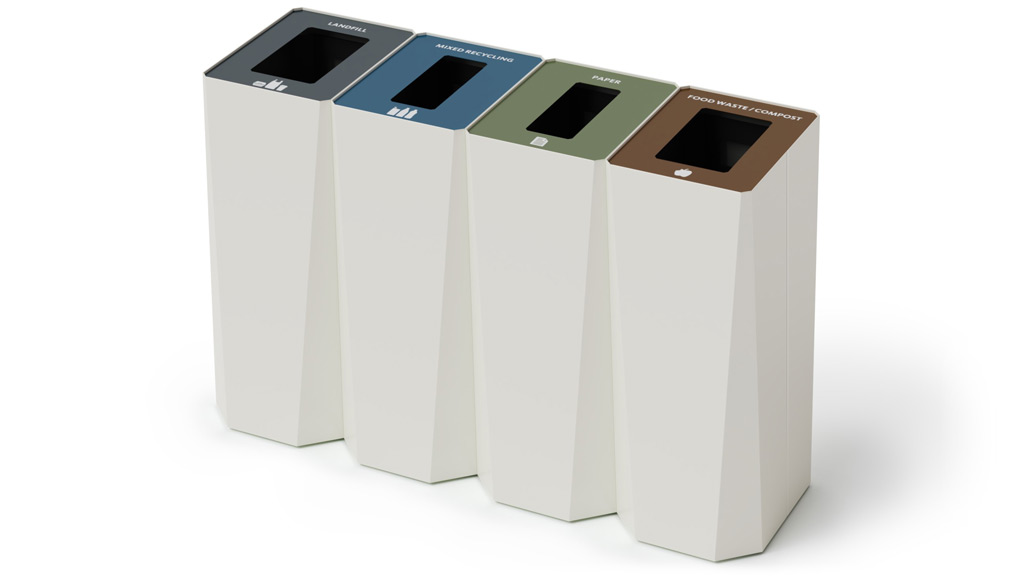Blowing the Lid Off Product Design:
5 Tips for a Better Trash Receptacle
December 13, 2023 | By Scott Star
When it comes to commercial grade trash receptacles, there’s no shortage of ways to throw things out, but most of the thousands of available options fall short of addressing the concerns of the interior designers who select them for use and their clients, the occupants of the spaces they design. So, the Product Development team at Gensler New York partnered with a trusted manufacturer to rethink the product category, and, starting with a survey of Gensler staff that crossed practice areas and offices, distilled five drivers that fueled our thinking for something better.
1. Make It Flexible
In our survey of interior designers, modular trash receptables offering stand-alone waste streams were favored over all-in-one, multi-stream units since independent waste streams can be deployed to affect just the right disposal system for any locale and anticipated load. The modular units can either be abutted to create the preferred combination of streams — including streams for metal, glass, plastic, paper, food waste/compost, and landfill — or used on their own as the need arises (e.g., a stand-alone food waste/compost receptacle in a corporate kitchen).
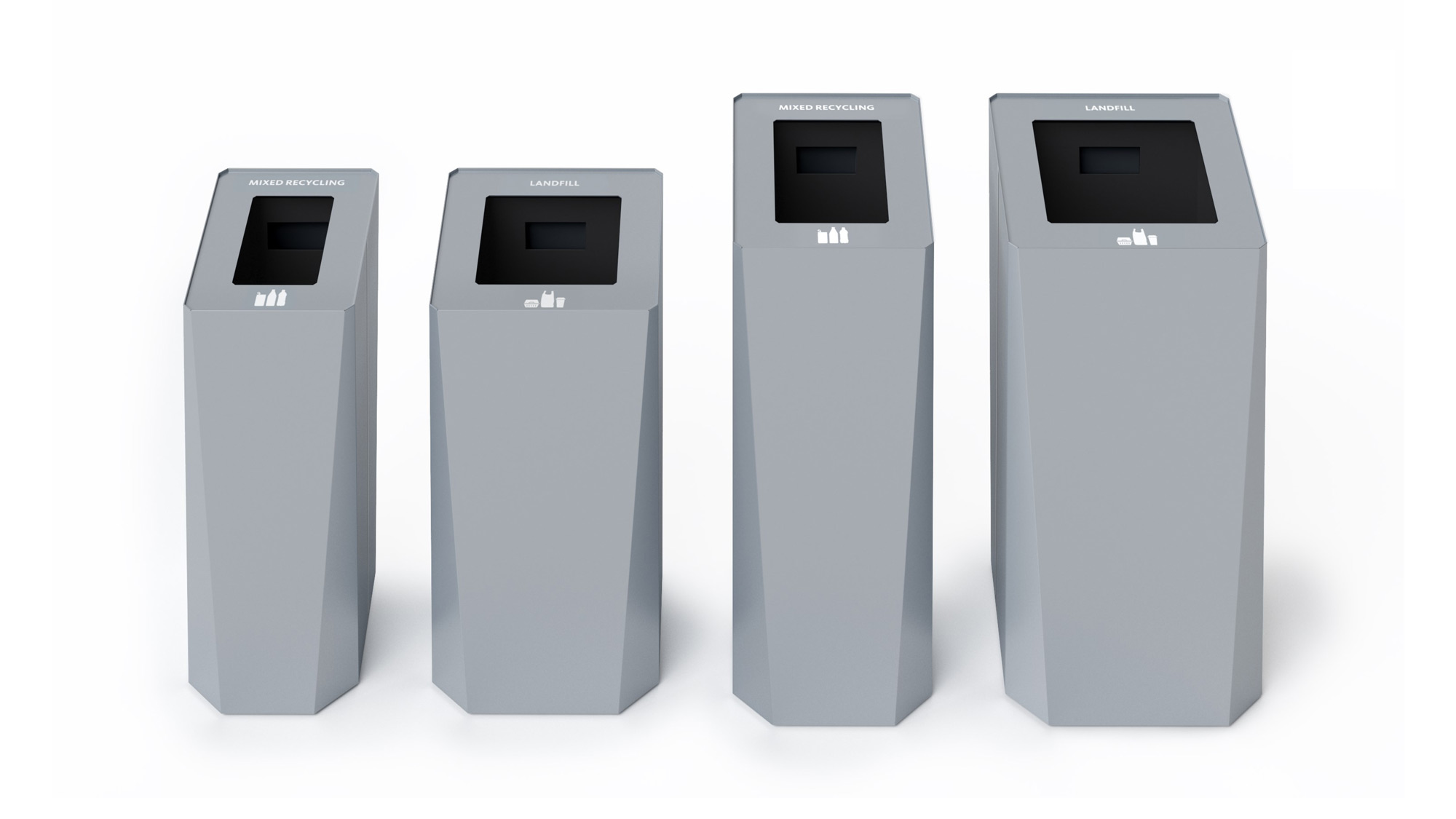
Fashioned with steel shells, aluminum lids, and polyethylene liners, the modular units in our system were dimensioned in four sizes to work in typical office environments all the way up to the high-traffic corridors of health care and educational interiors. Any of the four sizes can be designated for any waste stream, allowing the capacity to be calibrated to the facility’s specific disposal needs. And the units can be ganged with concealed magnets for instant connection and perfect alignment.
2. Make It Less Institutional
“Interior designers are eager to see trash receptacles move beyond simple rectilinear and cylindrical forms as long as the shapes are refined — neither generic or overly stylized —and integrate unobtrusively into their spaces,” according to Troy Grichuk, project design director at Gensler. “They prefer top openings, rather than ones on the sides, that maximize capacity and spare people from having to stare at gaping holes when sitting at their desks and tables. And they want a broad range of finish options, with an emphasis on neutrals, for better coordination with the environments they are planning.”
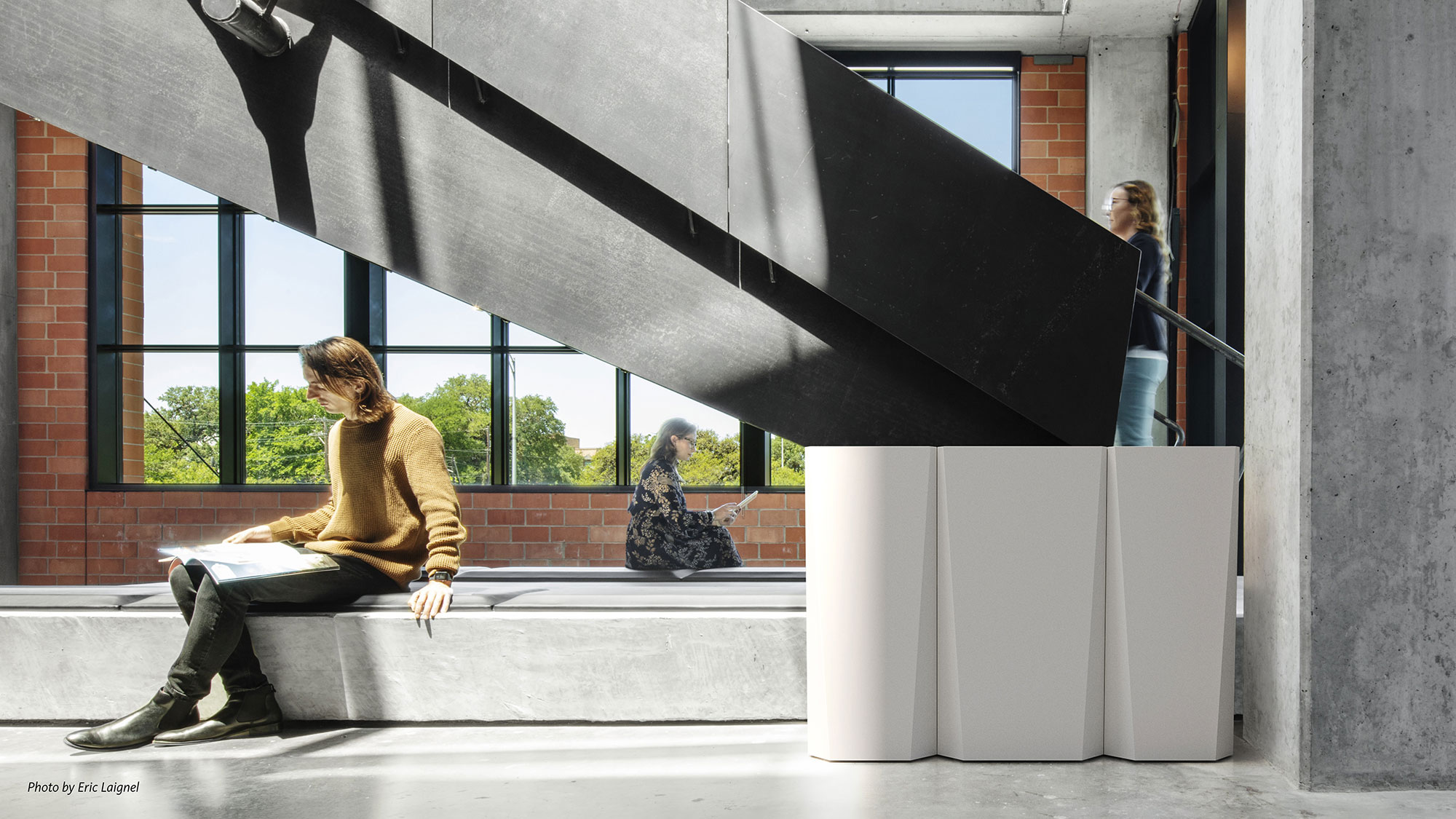
Our product design team started with a pure, rectangular form but beveled the corners on an angle to suggest the downward motion of the deposited trash. The resulting shape is architectural in feel, consistent regardless of approach (an important consideration if the receptacles will be floated away from a wall), and visually rhythmic when the units are connected. Six cool and warm neutrals were selected for a comprehensive, light-to-dark finish palette, and three extra color options were added for the lids to help identify trash streams. Instead of using the typical bright blue for bottles and cans and bright green for paper, we selected muted shades that accomplish the same end in a more sophisticated, less institutional way.
3. Make It Easy to Maintain
The interior designers we surveyed were unanimous in their aversion to seams, reveals, and gaps — particularly near the openings where dirt collects constantly. Smooth surfaces that can be wiped clean quickly were the order of the day, so we made sure our tops were perfectly flat and removable for speedy, allover maintenance.
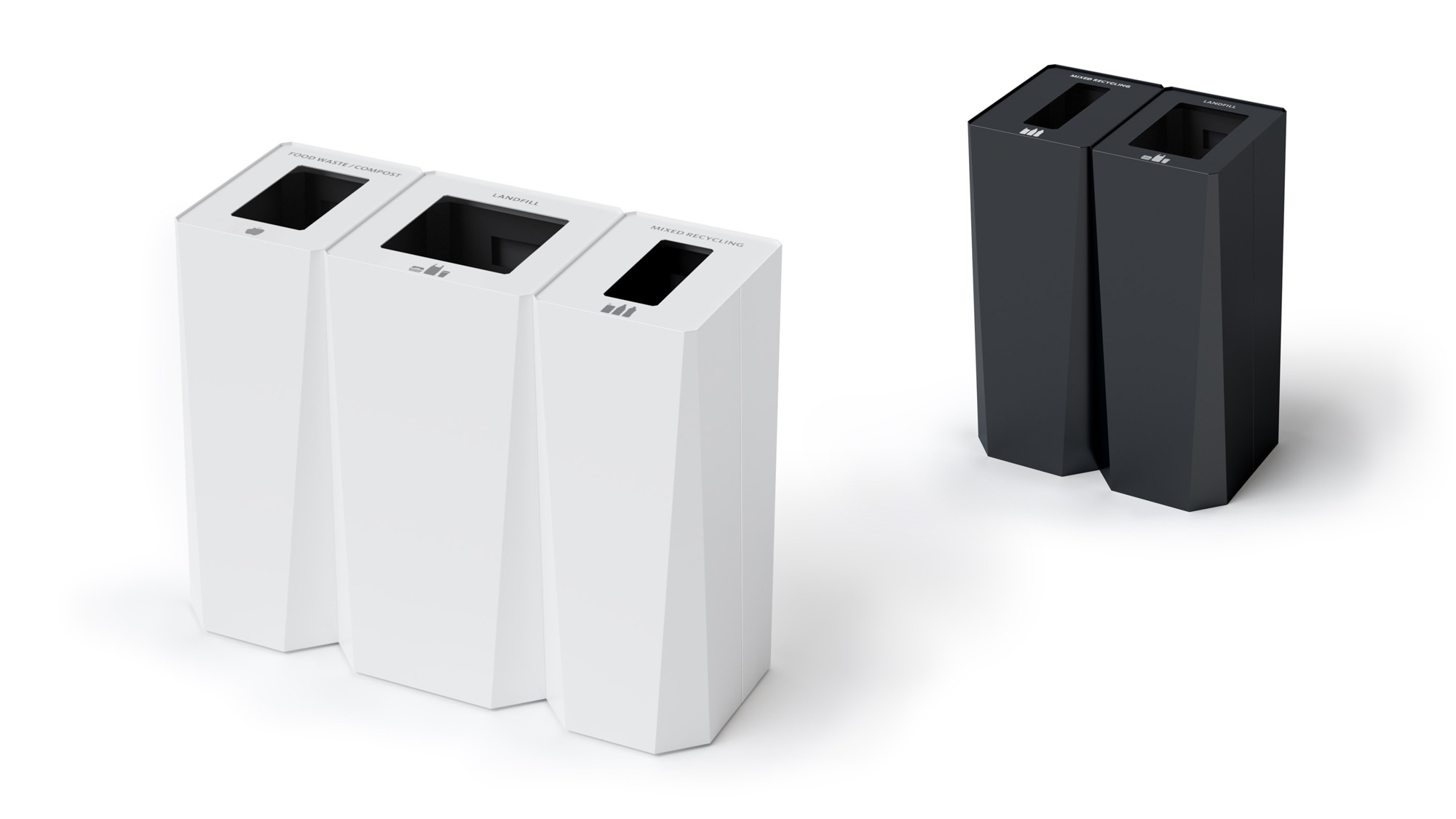
The finish was another dimension that evoked strong opinions. Textured finishes are perceived to look good out of the box, but they tend to trap food residue and dust; even the lint from a paper towel can be nearly impossible to remove. Glossy finishes minimize the problem, but their reflectiveness is considered downscale, plus they can show fingerprints and other oil-based markings — especially when specified in dark colors. So, we landed on a premium, smooth-matte finish that is neither grime-grabbing nor prone to printing.
Finally, we equipped each receptacle with a hidden bag ring that prevents trash and runaway liquids from falling between the polyethylene liner and the interior of the receptacle — a mess that is difficult to reach and no one wants to confront.
4. Make It Clear
Our survey respondents were quick to point out that the growing complexity associated with recycling has resulted in trash receptacle labeling that can be as difficult to digest as the labor law poster hanging in the office copy room. And the more intricate the labeling becomes, the more likely it will be misinterpreted or ignored by befuddled users. This has serious consequences for the environment, as bags of recyclables with even a few inappropriate items are often sent to landfill.
“Interior designers can influence what goes into a space, and can recommend sustainable materials and products, but operational sustainability and the choices made inside the environments they create are often out of their control,” maintains Shane Clark, project sustainability specialist at Gensler. “Trash receptacles that incorporate choice architecture — design that impacts decision making intentionally — can influence operational sustainability by making it harder for someone to make the wrong choice when discarding an aluminum can, a plastic-lined paper coffee cup, or a polystyrene food container.”
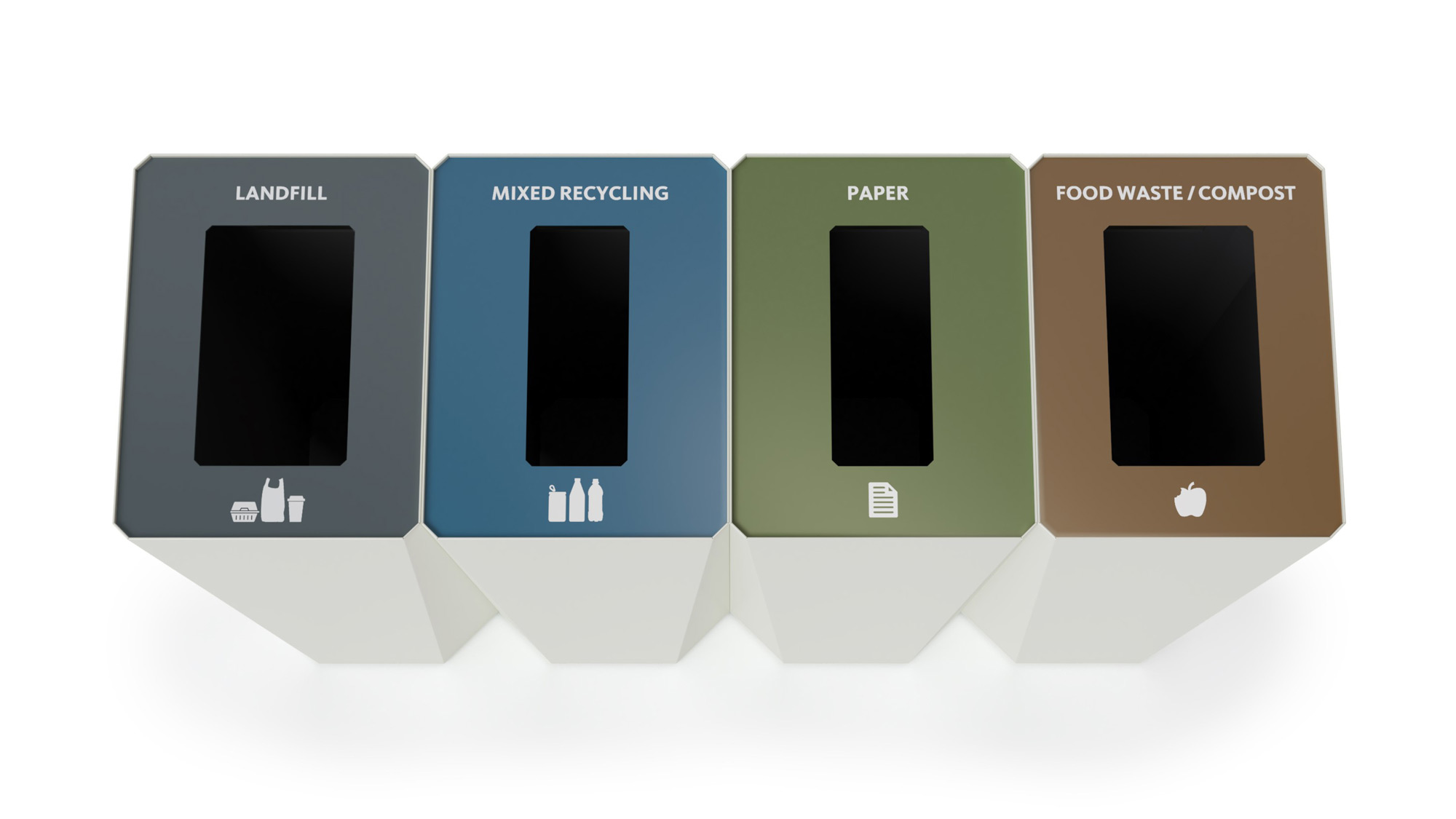
To help ensure a quick, easy to understand read, we pared down the label text to the minimum number of words, selected a classic yet non-serifed font, and pumped up the point size. We created coordinating, non-ambiguous pictograms for added clarity and to aid multilingual users. And we positioned both at the perimeter of the openings, rather than on the front elevations, to keep the instructions visible from all sides and as close to the user’s final decision — where to toss what — as possible.
5. Make It Sustainable
The great irony of trash receptacle systems is that while they exist to promote recycling, so many fail to make a full, cradle-to-grave commitment to improving the environment — an increasingly more common imperative for the interior designers and occupants of commercial spaces. So, in the production planning of our new design, material safety, embodied carbon, and end-of-life circularity were as much in focus as operational sustainability.
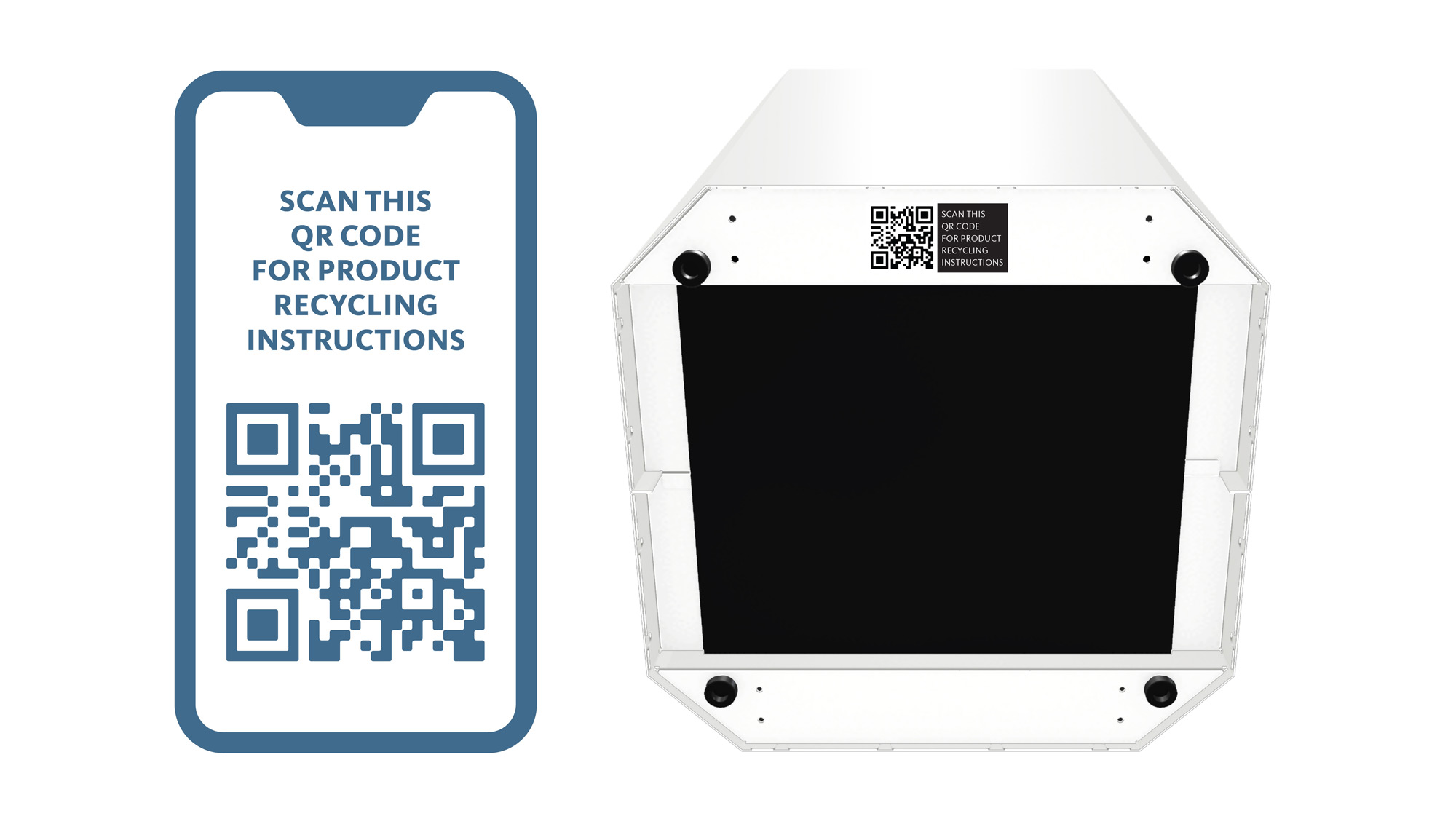
Declare® Red List Approved and Indoor Advantage™ Gold certified, the receptacles avoid harmful ingredients and support healthier indoor air quality by meeting strict limits for volatile organic compound (VOC) emissions. Made in the USA, they contain 86% recycled content (54% post-consumer) and are 97% recyclable. Moreover, a QR code on the bottom of each unit leads owners to directions for proper disposal of the receptacles at the end of their long and useful life. It is a trash receptacle system that takes recycling seriously — from its manufacturing through its long-term use to its ultimate reincarnation.
Click here for more information on Trash Receptacle Systems
To learn more about Gensler’s Product Development practice, please contact Scott Star at .
For media inquiries, email .
